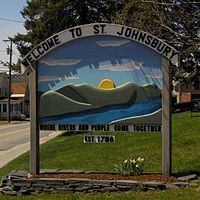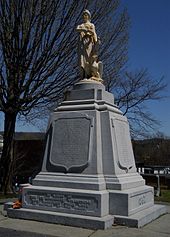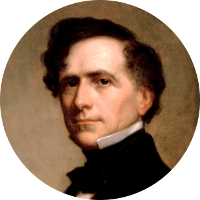- 1910 Census Salisbury NH
- 1910 City Directory
- 1911 Residence Salisbury NH
- 1913 City Directory Salisbury NH
- 1914 Salisbury NH
- 1915 Death Certificate, Will, Probate
1910 Census, Salisbury NH
 |
| 1910 Census Salisbury NH Amos Hamm |
Amos Hamm, age 78, born 1832 in Vermont. Once again, no street name nor house number for their home in Salisbury, Merrimack NH. He is living with his wife Mary J, this is the second marriage for them both, and they have been married for 39 years. Mary Jane has had 5 children, three of whom are still living. In this census, both of his parents are born in Vermont, not Massachusetts as is recorded the previous census. Amos owns his own farm. In this census we find out that Amos fought in the Civil War for the Union Army.
Please note the family just next door is Frank and Mertie Hamm Forsaith, Amos' daughter. So, this Augusta C. Forsaith is Amos and Mary's granddaughter. That will teach me to look at everybody on the page.
1910 City Directory
 |
| 1910 City Directory, Salisbury, Merrimack NH |
Amos L. Hamm, farmer on Andover rfd 1, Salisbury, Merrimack County NH. Again, note the Frank Forsaith farmer.
1913 City Directory
 |
| 1913 City Directory, Salisbury Merrimack NH |
Amos L. Hamm, farmer on Andover rfd 1, Salisbury, Merrimack County NH. Again, note the Frank Forsaith farmer.
1915 Death Certificate and Will and Probate
 |
| Amos Ham Death Certificate Front |
 |
| Amos Ham Death Certificate Back |
Not much more information on the back, either. It doesn't even mention the name of his wife. The physician is named, as well as the undertaker in Franklin NH. He was buried in Shaw's Corner, Franklin NH on 14 February 1915.
 |
| Amos Ham 1915 will Detail |
Ham, Amos L. Will.Some thoughts -- The person writing this had almost perfect penmanship. It is a style easy to read, but I've been unable to identify the form of penmanship. It isn't Spencerian which typically has elaborate calligraphy. It may be Zaner-Bloser which was taught during this time frame, except this man's personal style is vertical. Do you have an idea?
Be it known that I Amos L. Ham of Salisbury County of Merrimack and State of New Hampshire. Being of a sound and disposing mind do make this my last will and testament.
1st -- That all my just debts and funeral expenses be paid
2nd -- I give and bequeath to my daughter Ella F. Sleeper the sum of one dollar
3d -- I give and bequeath to my daughter Myrtella M. Forsaith all the remainder of my estate wherever found
4th -- I appoint Myrtella M. Forsaith executrix of my will
Salisbury N.H. November 25. I sign the above as my last will and testament
his
Amos L [x] Ham
mark
And we by his request and in his presence do sign as witnesses
George E. Fellows
Harold A. Prince
Mrs. Carrie J. Farnsworth















































